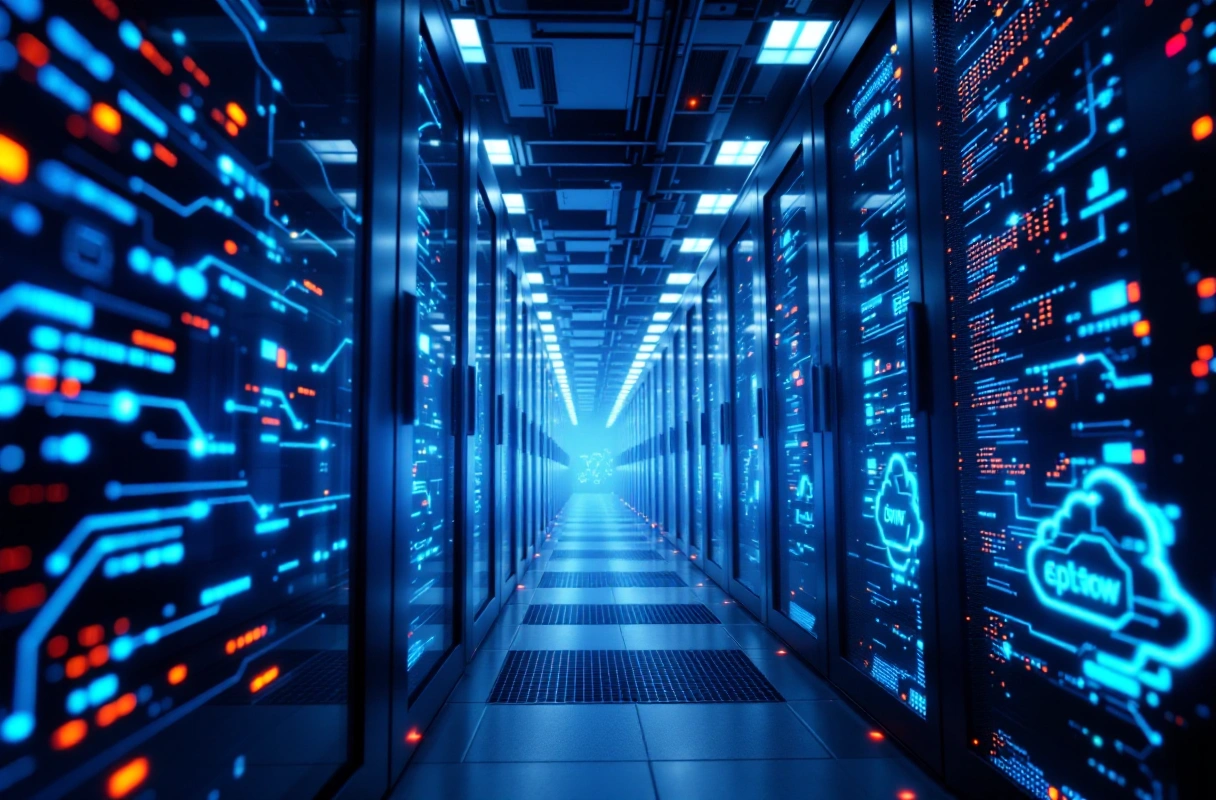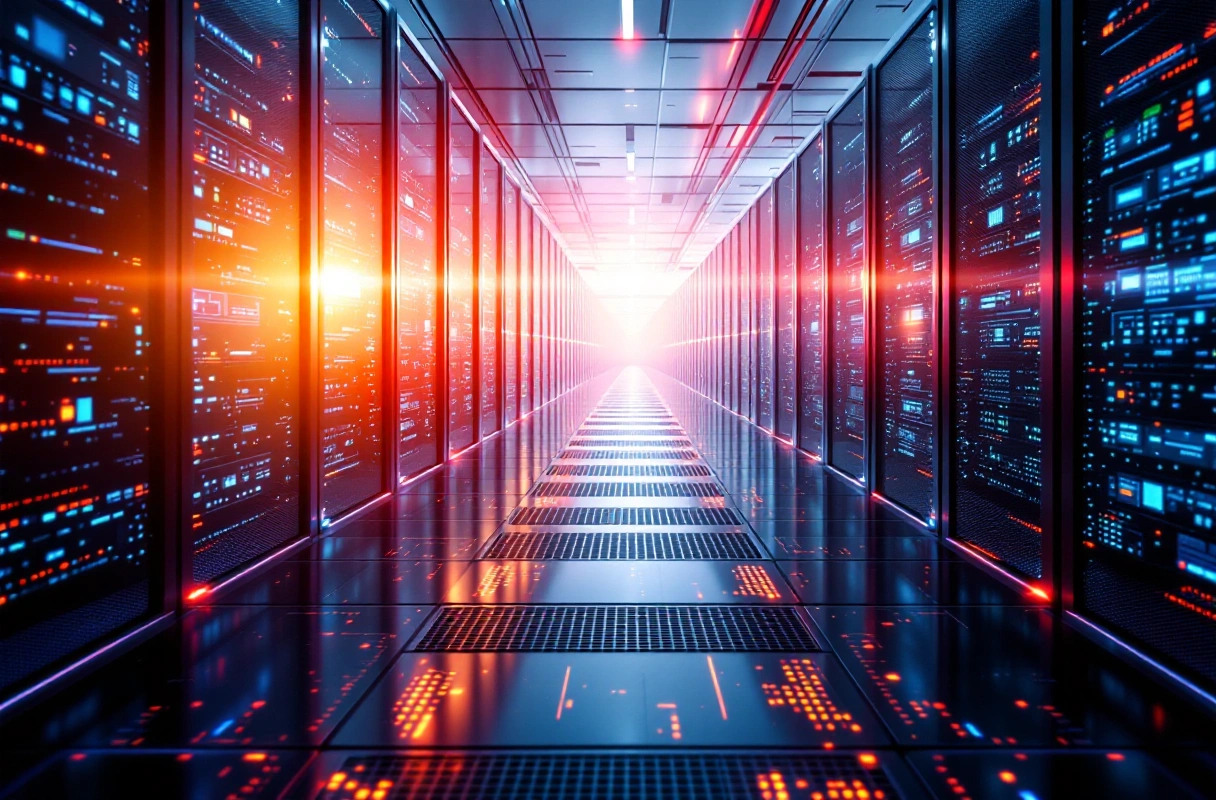In an era where data is deemed the new oil, the efficiency of data center infrastructure has become paramount. Organizations are constantly seeking ways to enhance performance, reduce costs, and minimize their environmental footprint. This article will discuss effective strategies for optimizing data center infrastructure, while also examining the intersection of AI and cloud computing with these infrastructures.
Understanding Data Center Infrastructure

Data center infrastructure encompasses the physical and virtual resources that support the processing, storage, and dissemination of data. This includes servers, storage systems, networking equipment, and the facilities that house them. An efficient data center infrastructure can lead to significant operational advantages, including improved service delivery, lower energy costs, and increased scalability.
The components of data center infrastructure can be broadly categorized into three areas:
- Hardware: This includes servers, storage devices, and networking equipment. Each of these elements must be optimized for performance and energy efficiency.
- Software: The management and orchestration software that governs how hardware resources are allocated and utilized. This includes virtualization software and cloud management platforms.
- Facilities: The physical environment in which data center hardware is housed, including cooling systems, power supply, and physical security measures.
Understanding the interplay of these components is essential for optimizing data center infrastructure.
Key Components of Data Center Infrastructure
Hardware Optimization
- Server Virtualization: This process allows multiple virtual servers to run on a single physical server, maximizing resource utilization and reducing hardware costs. Virtualization not only enhances efficiency but also simplifies management by allowing IT teams to deploy and manage resources from a centralized platform.
- Energy-Efficient Hardware: Investing in energy-efficient servers and storage devices can lead to substantial cost savings over time. Look for hardware that complies with Energy Star certifications or similar standards, which ensure that the devices are designed to minimize energy consumption.
- Regular Hardware Maintenance: Keeping hardware in optimal condition through regular maintenance and timely upgrades is essential. This not only prolongs the lifespan of the equipment but also ensures that it operates at peak efficiency.
Software Solutions
- Cloud Management Platforms: These tools provide visibility and control over cloud resources, allowing organizations to optimize their use of cloud computing. They can help manage workloads efficiently and ensure that resources are allocated based on demand.
- Automation Tools: Implementing automation in data center operations can significantly enhance efficiency. Automation tools can manage routine tasks, such as backups and updates, freeing IT personnel to focus on more strategic initiatives.
- Performance Monitoring: Utilizing software that monitors performance metrics can help identify bottlenecks in the system. By understanding where inefficiencies lie, organizations can take proactive measures to rectify issues before they escalate.
Facility Management
- Cooling Systems: Inefficient cooling can lead to increased energy costs. Implementing hot aisle/cold aisle containment strategies can improve cooling efficiency by managing airflow in the data center.
- Power Management: Utilizing uninterruptible power supplies (UPS) and efficient power distribution units (PDUs) can optimize power usage and ensure that the data center remains operational during power outages.
- Physical Security Measures: Protecting data center infrastructure from physical threats is paramount. Implementing security protocols and technologies such as biometric access controls and surveillance systems can safeguard valuable resources.
Exploring the Intersection of AI and Data Center Infrastructure

Artificial intelligence is reshaping the way data centers operate. By integrating AI technologies, organizations can optimize their data center infrastructure in several ways.
Enhanced Resource Allocation
AI algorithms can analyze usage patterns and demand forecasts to optimize resource allocation. This ensures that hardware is utilized efficiently, and resources are provisioned dynamically based on real-time needs.
Predictive Maintenance
AI can predict hardware failures before they occur by analyzing performance data and identifying anomalies. This proactive approach to maintenance reduces downtime and minimizes the impact of hardware failures on operations.
Energy Efficiency Management
AI technologies can optimize energy consumption by adjusting cooling and power systems based on real-time data. This not only reduces costs but also contributes to sustainability goals by lowering the carbon footprint of data centers.
The Role of Cloud Computing in Data Center Optimization

Cloud computing has transformed the landscape of data center infrastructure. By leveraging cloud services, organizations can enhance their infrastructure in numerous ways.
Scalability
Cloud computing allows organizations to scale their data center infrastructure seamlessly. This means that businesses can quickly adjust resources based on demand without the need for significant capital investment in physical hardware.
Cost Efficiency
By utilizing cloud services, organizations can reduce the costs associated with maintaining on-premise infrastructure. This includes savings on hardware, maintenance, and energy costs, as cloud providers typically operate at a scale that allows for cost efficiencies.
Disaster Recovery
Cloud-based solutions provide robust disaster recovery options. Organizations can back up their data and applications in the cloud, ensuring business continuity even in the event of a catastrophic failure.
Common Misconceptions About Data Center Infrastructure Optimization
Misconception 1: More Hardware Equals Better Performance
Many organizations believe that simply adding more hardware will solve performance issues. However, this can lead to underutilized resources and increased costs. Instead, focusing on optimizing existing hardware and implementing virtualization can yield better results.
Misconception 2: Cloud Solutions Are Always Cheaper
While cloud computing can reduce costs, it is not a one-size-fits-all solution. Organizations must carefully analyze their specific needs and usage patterns to determine if cloud solutions will provide a cost advantage over traditional infrastructure.
Misconception 3: Data Center Optimization Is a One-Time Task
Data center optimization is an ongoing process. As technology evolves and business needs change, organizations must continuously assess and optimize their infrastructure to maintain efficiency.
Actionable Tips for Optimizing Data Center Infrastructure
- Conduct regular audits of hardware and software to identify inefficiencies.
- Implement energy monitoring systems to track power consumption and identify areas for improvement.
- Explore hybrid cloud solutions to balance on-premise resources with cloud capabilities.
- Invest in training for IT staff to ensure they are equipped to manage and optimize data center infrastructure effectively.
Maximizing Efficiency in Data Center Infrastructure with Edge of Show
Optimizing data center infrastructure is about more than boosting performance—it’s about building a sustainable, cost-effective foundation for cloud, AI, and decentralized technologies. As digital demands grow, organizations that prioritize efficiency today will be better prepared to scale tomorrow.
At Edge of Show, we highlight how these infrastructure shifts intersect with Web3 and emerging technologies, giving you insights from the innovators building what comes next. Tune in to the Edge of Show podcast to explore how data centers are evolving to power the future of decentralization and digital innovation.


.jpg)

.jpg)
.webp)
.webp)
.webp)


.svg)









